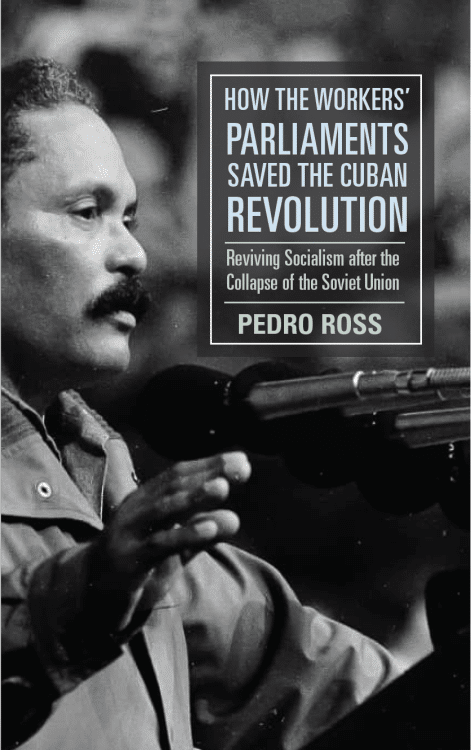How the Workers’ Parliaments Saved the Cuban Revolution
By Pedro Ross
180 pages / $27 / 9781583679784
Reviewed by Al Campbell
I take it as a safe assumption that anyone reading this review in this journal knows that at the beginning of the 1990s Cuba faced the possibility of the collapse of its Revolution because of the collapse of its economy, in turn caused by the extremely rapid collapse of the large majority of its international trading relations which were essential for its domestic production (as they are for any small country).
On the one hand, this is a book about what its title says it will be about, How the Workers’ Parliaments Saved the Cuban Revolution. That already involves two different things – a description of the situation the Cuban Revolution found itself in at the beginning of the 1990s that threatened its very existence, and a description of what the workers’ parliaments were and what they did. While a small handful of books devote some space to discussing Cuba’s workers’ parliaments, this is the only book in English that this reviewer is aware of devoted entirely to the topic. Further, while this process was “[u]der the direct leadership and initiative of Fidel Castro”, it was “driven by the trade unions” (p. 9), and this book is authored by the then General Secretary of the national confederation of Cuban trade unions, the Central de Trabajadores de Cuba (CTC), Pedro Ross.
On the other hand and of particular interest to the readers of this journal who are interested in Cuba’s socialist project and/or socialism in general, this book is a case study “of working class power in action” (p. 10). “Ideas with organization, commitment and ideological clarity change the world. The Cuban Labor Parliaments were one such idea in the rich lexicon of ideas from Revolutionary Cuba” (p. 16).
There have been a few book reviews in progressive journals and magazines that have presented the first aspect above of the book well, a description of what the Workers’ Parliaments were and what they did.2 Given the existence of these, this review will only address the second aspect, consideration of the book as a case study of working class power in action.
The ordering of the two halves of the book will at first strike many readers as strange. The first half describes the workers’ parliaments and their immediate antecedents in the early 1990s, and then the second half jumps back to cover from the arrival of the Spaniards up to the end of the 1980s. The author explains his reason for this structure, reflecting his intention to consider the Workers’ Parliaments as part of the Cuban people’s centuries-long revolutionary struggle for self-determination of their own society.
To grasp what was occurring during [the period of the workers’ parliaments], and overall understanding of the Cuban historical process is essential. This is why this book was conceived in two parts. The first addresses the experience of the workers’ parliaments. The second aims to synthesize the events that shaped the Cuban historical fabric and demonstrate the core features of our intentions and purpose. (pp. 22–23)
Faced with the implosion of the economy at the beginning of the 1990s and eschewing the neoliberal approach of placing the burden of social downturns on the poorest and weakest members of society, the Cuban government had to impose many restrictions on the consumption of all its citizens to distribute the hardships. How this was done is the heart of understanding the workers’ parliaments as a case study of workers exercising workers’ power, and hence as a case study of a particular dramatic and important event in Cuba’s 60-year effort to build socialism. In the words of the author:
Yes, there would be many painful restrictive measures. But they would not be imposed by government decree, and they certainly never would be neoliberal. They would result from broad and profound consultation with the entire country, including agricultural workers, students, and the general population. The National Assembly of People’s Power adopted this approach, which lead to the establishment of the worker’ parliaments during the first months of 1994. (p. 21)
The Cuban Revolution, of course, did survive. But what this book examines and documents as it examines and documents the workers’ parliaments is a case study of the exercise of workers’ power, a case study of workers organizing to solve their own (in this case sever) problems. Closing with the words of the author:
This unprecedented democratic and participatory process produced results that exceeded the most optimistic expectations. It elicited the commitment and the creativity essential to developing feasible proposals for surviving the Special Period.

Comments are closed.